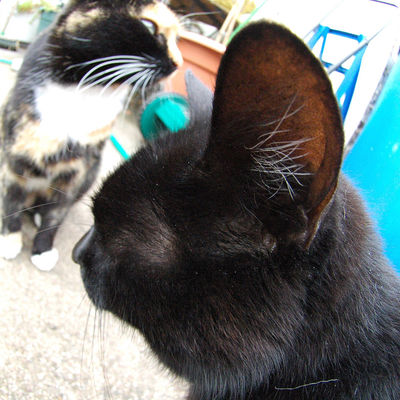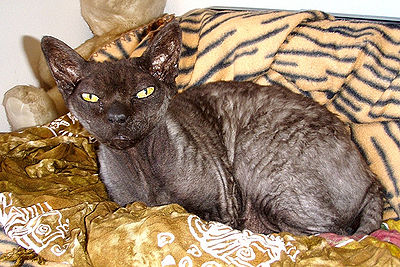Cytauxzoonosis is caused by protozoa. Protozoa are tiny organisms found in the environment. The host animal is the bobcat, although the Texas cougar was discovered to be a host too. It was also found in a captured white tiger. Cytauxzoonosis is not a zoonotic disease in spite of the name. In other words, it is […]
Cat Diseases
One of the first things any cat owner does after adopting a cat is visit the vet. Cats can catch diseases just like humans can. Some are contagious to humans (these are called zoonoses) but the majority are not. Cats can also suffer from non-contagious diseases such as diabetes and cancer. Changes in appetite or elimination or changes in behavior are signs that something is wrong and you should consult your vet. See more: How to Tell if Your Cat is Sick
These articles discuss cat diseases, prevention and treatment:

Eosinophilic Granuloma Complex
An Eosinophil is a type of white blood cell that responds to allergic reactions or parasites. A granuloma is a solid lump of inflammatory cells. There are 3 different skin conditions called Eosinophilic Granuloma Complex, not all of which are granulomas or contain eosinophils. EGC is rare in dogs and more commonly seen in cats […]

Feline Odontoclastic Resorptive Lesions
Feline Odontoclastic Resorptive Lesions, FORLs, sometimes referred to as feline cavities, occurs when cells called odontoclasts cause resorption of the tooth. The disease appears first at gum level eventually progressing to the tooth crown. The entire tooth may be resorbed or the enamel may fracture. Gum tissue then grows over the area. While the cause […]

Feline Herpes Virus
The Feline Herpes Virus, FHV-1, affects both domestic and wild cats. It is more commonly found in shelters, rescues and homes with more than one cat. While cats of any age can contract FHV-1, most at risk are kittens, older cats and pregnant cats who can transmit the disease to their kittens. The virus is […]

Feline Panleukopenia
Feline Panleukopenia, sometimes called FLP or Feline Distemper is a severe viral infection invading rapidly growing cells – the gastrointestinal tract, bone marrow, lymph tissue, the nervous system. It affects both domestic and wild cats as well as raccoons and mink. Leukopenia refers to a low white blood cell count. Panleukopenia can be spread by […]

Vestibular Disease
Vestibular Disease can affect humans and dogs and cats as well as other mammals too. The vestibular system helps our body to navigate the earth. It allows our eyes, hands and legs know how to move, preventing falling. We are able to navigate on all types of terrain without dizziness or nausea. The most common […]

Understanding Arthritis in Cats and Dogs
Humans aren’t the only ones who have to deal with arthritis. Dogs and cats are both susceptible to it as they age. Arthritis is sometimes caused by infection of the joint, but most likely it’s just due to wear and tear throughout the years. Unfortunately, pets can’t explain their symptoms, which can make it hard […]

Spondylosis in Pets
Spondylosis is a degenerative disorder meaning it grows worse with time. It causes loss of spinal structure and function. Bone spurs (osteophytes) form at the edges of vertetrae, sometimes forming bony bridges between them. Usually, the lower back is affected, but it can occur in the neck and anywhere along the spine. Spondylosis is an […]

Cats and Upper Respiratory Infections
Upper Respiratory Infections (URIs) are more common complaints for cats in shelters or those that live or allowed outdoors. Cats are affected by URIs more than dogs because of their flatter faces (difficulty breathing), especially breeds like Persians. Kittens, because of their immature immune systems, are most at risk. There are 2 viruses that are […]

Sporotrichosis in Cats
The fungus, Sporothrix schenckii is found in soil, plants and spagnum moss. It is an infection as it is transferable from pets to humans. Sporotrichosis can infect the skin, respiratory system, bones and even the brain. Cats usually have skin lesions which make it easier to transmit the infection to other animals and humans. Symptoms […]
